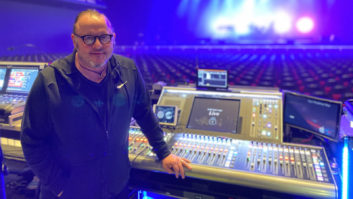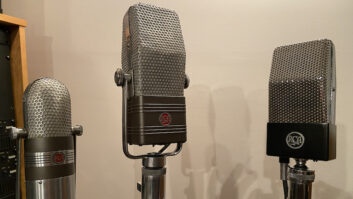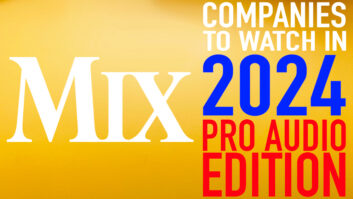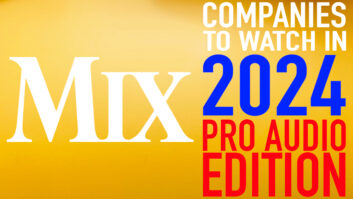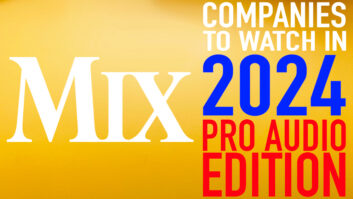The French have a phrase for it: “Reculer pour mieux sauter,” which loosely translated means that sometimes you have to step backward in order to gain the momentum to jump further. While whoever came up with that phrase was likely not thinking about pro audio software, it’s highly applicable these days.

It used to be the big selling point for software was how many features it had—it does this! It does that! It slices, dices, and does your laundry! But lately, the rallying cry has been simplification. Part of this mirrors society; we’re certainly no longer in the decade of excess, and people are cutting back. However, in this case, it’s also about competitiveness. If you can complete a job faster and with less drama than you could previously, that’s a good thing.
Let’s star t with Avid’s Pro Tools. When they announced the ability to work with just about any interface hardware, they simplified matters for a lot of people (myself included): If you have a favorite non-Avid interface, you didn’t have to switch and re-patch just to run Pro Tools. Furthermore, Line 6, which required using their interfaces to run POD Farm software, have opened up their system to work with any USB interface.
And this leads us immediately into the topic of copy protection, which has also been simplified. Line 6 and Avid had used their interfaces as sort of “giant dongles,” and each has taken a different approach to maintaining protection. Pro Tools still requires an iLok, but Avid is also emphasizing its new line of admittedly excellent hardware interfaces that work with programs other than Pro Tools— the company may lose money on Pro Tools cracks, but it won’t lose money on hardware cracks. Meanwhile, Line 6 has introduced license- management software that allows keying the program to a Line 6 interface or your computer, or use iLok protection.
In fact, more and more companies are simplifying the copy-protection process by maintaining an online account for you with serial numbers and authorizations. For example, if the software is keyed to a hard drive and the drive crashes, just de-authorize that authorization and authorize the new hard drive. Most companies are also fine with authorizing for both desktop and laptop. IK Multimedia is a good example of the changes in copy protection: It started with a dongle, but ditched it after deciding it cost too much, inconvenienced customers and didn’t deter software theft anyway. It then went to an elaborate challenge/response system, but recently, simplified that to a universal license-management application (similar to what Native Instruments pioneered with its Service Center).
Software itself is becoming simpler, too. The “poster boy” for this trend is Waves, with its “oneknob” series of software plugins. This harks back to Yamaha’s Sweet Spot Morphing Compressor, designed to replace a compressor’s complement of controls with two knobs that morph among optimized settings. The Waves software works similarly: There’s a lot going on behind that one knob, as interactive parameters are edited seamlessly and simultaneously.
Even DAWs, long a haven of feature bloat, are getting in on the act. Recent releases of Sonar, Cubase and Pro Tools have all emphasized streamlined workflow and better system integration instead of a wealth of extra features. When they have added functionality, it’s usually been in the form of new plug-ins so that—you guessed it— you don’t have to go outside the DAW environment to run your virtual instruments or insert effects.
What’s more, new companies are finding competitive niches by emphasizing simplicity. For example, the Softube series of guitar amp “rooms” have a couple amps/cabs and a few moveable mics—no effects, no one zillion models, no reverbs other than the room ambience you get from moving the mics around. Even the amps are simple—gain and tone. What’s more, simplicity doesn’t always mean simplistic; they’ve poured all their efforts into making one simple, easy-to-use setup. So while there aren’t a lot of options, what you do get is eminently useable… just like a real guitar amp.
Even instruments are getting into the act. Remember when touring keyboard setups used to consist of a controller and a bunch of rack modules? No more. Keyboard manufacturers are building more and more functionality into individual keyboards so that you don’t really need anything else. Consider the Korg Kronos, which has nine different synth engines and a large solid-state disc drive. You won’t be adding a virtual rack or sampler rack because, well, they’re already included in the keyboard.
Life is complicated enough these days, and the emphasis on simplifying our workflow—without diminishing, and, in some cases enhancing, quality—is certainly welcome.
Craig Anderton is executive editor of Electronic Musician magazine and editor in chief of harmonycentral.com.

